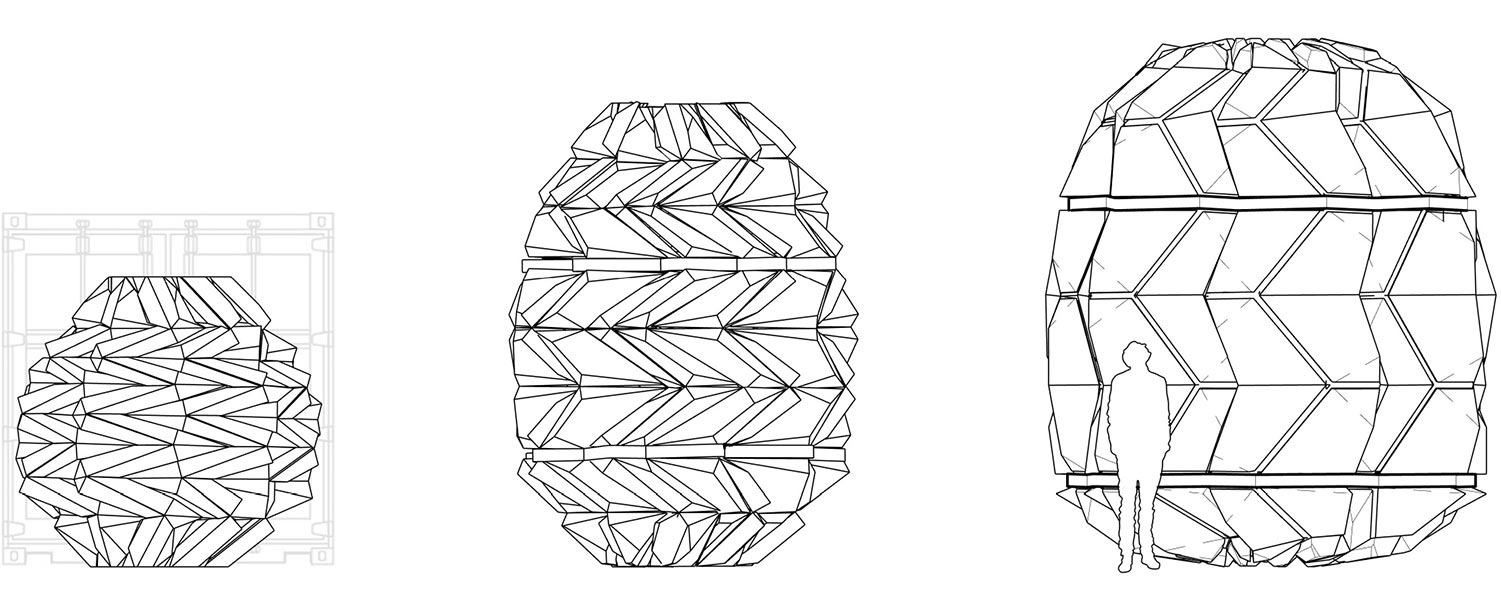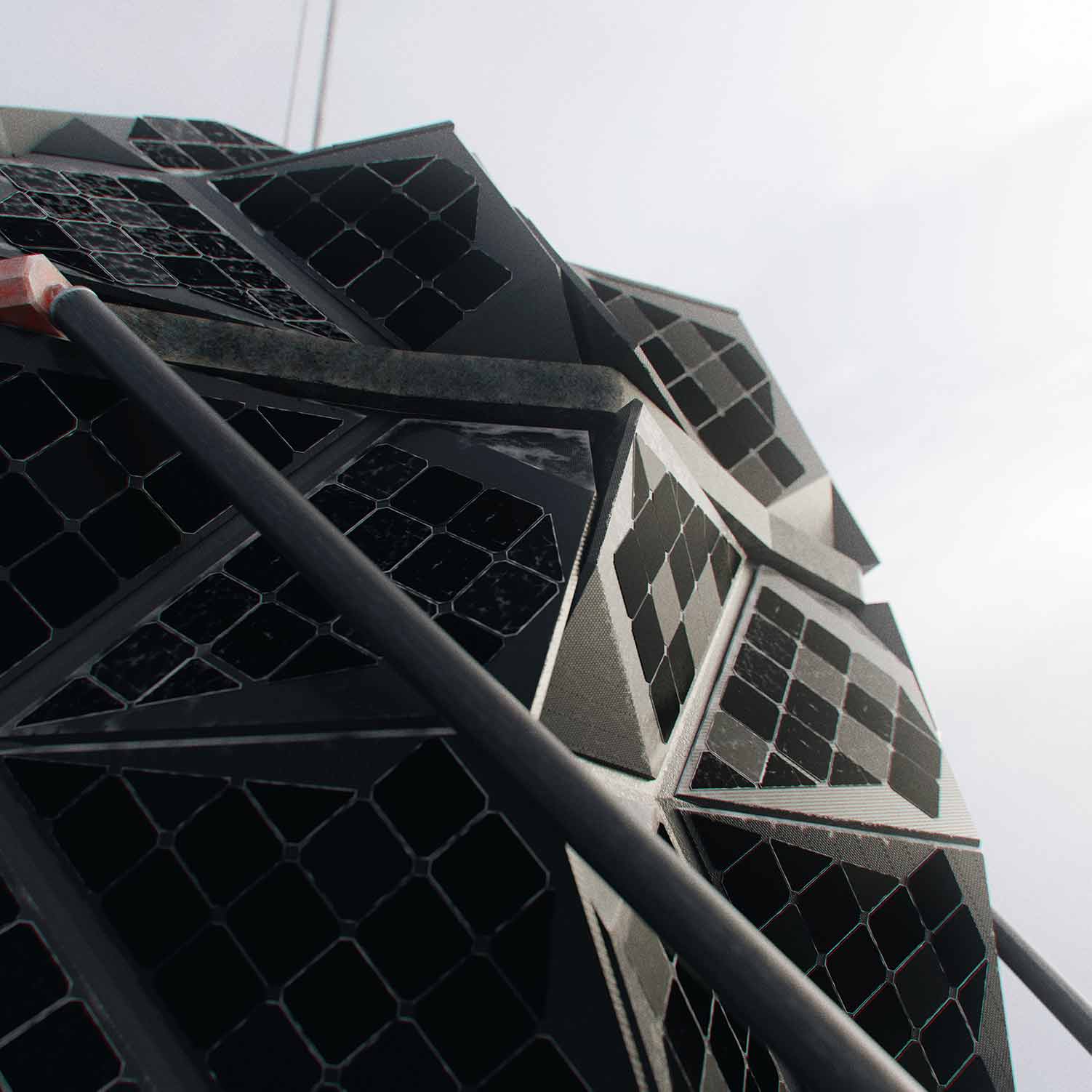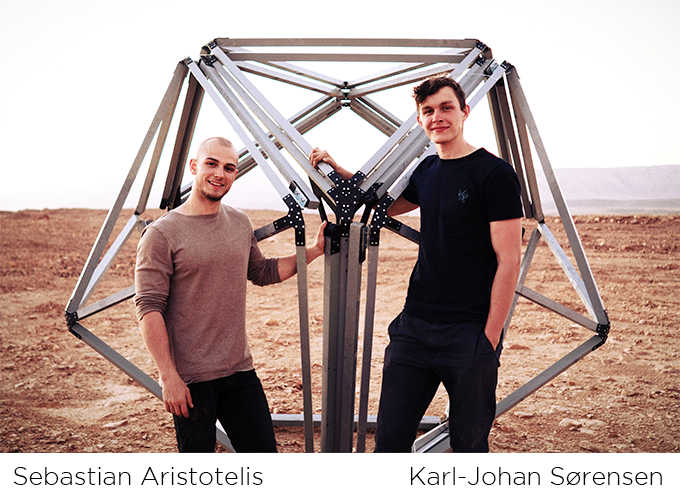In 2024 humans will land on the Moon again but this time with a new Moon habitat and Humans in Focus. Built by SAGA space architects, LUNARK is the very first Moon Analogue habitat. Large parts of habitat will be 3D printed. With solar panels, the whole habitat is completely off the grid.
The LUNARK Habitat-
The biggest challenge would be the transportability for future Moon mission. LUNARK uses the ancient Japanese art of paper folding with the method of biomimicry to achieve lightweight and strong foldable structure. The challenge lies in translating origami into thicker panels that should still fold.
The final hinge design is a compliant mechanism it’s lightweight, strong, airtight, simple to manufacture and to maintain. These are some innovative designs to the test, to demonstrate how space architecture could look, and accelerate the architecture and technology of future Moon habitats. The team is working on making space livable for future space travelers by approaching the design of habitats from a human perspective, where mental well-being and social sustainability is part of the life support equation.

The Habitat Overview:
The following features will be implemented
- Dynamic Circadian Light System: Sleep disruptions and out-of-sync circadian rhythms make astronauts lethargic and unproductive. A ceiling that slowly changes in hue and luminosity over the day will be the Circadian Light system
- Solar Panel Skin: The exterior of the habitat will be covered in solar cells to maximize the energy generation
- Expanding Architecture: Since the habitat will have to be transported with a Hercules plane (and potentially later by a rocket) there is very strict volume requirement
- 3D-printer: Some of the interiors will be 3D-printed. The printer will be able to predict maintenance or risks through a simple AI, so as to 3D print replacement parts before they break
- Vertical Farm
- Algae-based life support system (Algae Reactor): It is resilient, highly photosynthetic, nutritious, and can absorb cosmic radiation. Algae are incredibly efficient at using low-intensity light conditions to make energy via photosynthesis, which makes the plant perfect for on-orbit growing
- Batteries, water tank, storage
- Digital Twin: A digital model which connects all the habitat’s systems (eg. life support, heat, water, electricity), along with embedded sensors. The goal is to be able to predict maintenance or risks through a simple AI, and to 3D print replacement parts before they break
- Weather Simulator: A weather simulator to break the monotony of space
Mark 1 Specs

- Folded Storage Volume - 2.9m³
- Deployed Inner Volume - 17.2m³
- Volume Increase - 560%
- Shipping Dimensions - 2.23m x 2.23 x 2.23m
- Weight - 1738kg
- Crew Capacity - 2 people
- Pressurized - No
- Min. Temp. - 45°C
- Power Source - Solar Panels
- Battery Capacity -1000Ah
The habitat is completely developed and
the crew
with the habitat are on a 3 month total isolation mission in Greenland.
The expeition will be building the first Moon habitat analogue in the arctic regions of Greenland, and
enduring the
dangerous environment for 3 months.
The mission will take place in Greenland.It needs to be very cold and remote.
and will last for 3 months (91 days).
WHY GREENLAND?

Similarities: In an extreme climate so far away from civilization, similarities to the Moon begin to reveal themselves. The landscape is bare and lifeless, the sun does not follow a normal circadian rhythm, and instead of a space suit, one has to wear a polar suit to survive the cold.
MEET THE SPACE ARCHITECTS

Mission overview - With thousands of hours spent designing, researching, and prototyping, we are now ready to build our LUNARK Habitat - a simulated Moon habitat for research, with the aim that it one day can sustain life on the Moon. Isolated and confined in one of the harshest climates on Earth, we will test our Habitat, enduring -30°C, hurricane winds, and hungry polar bears when we venture on our most extreme project to date.

